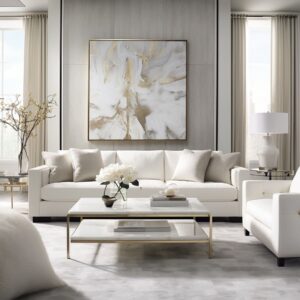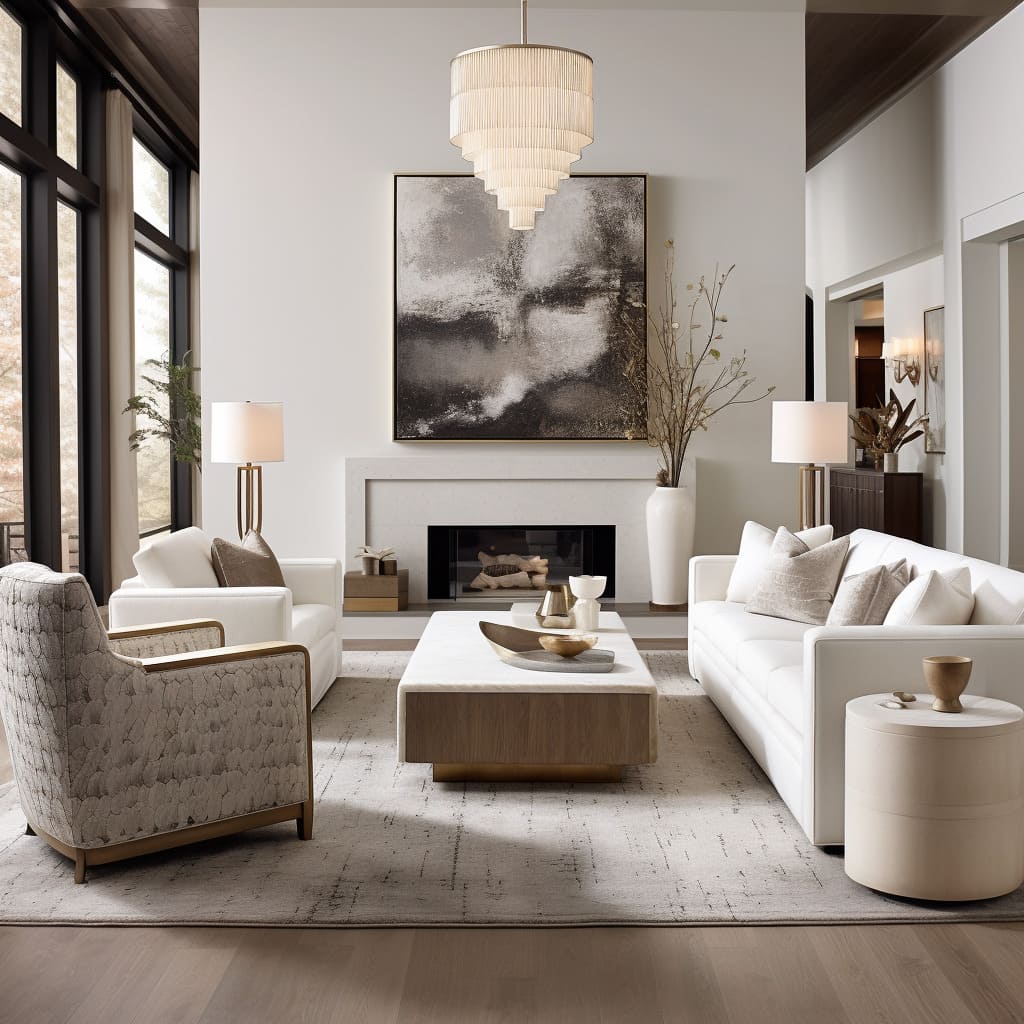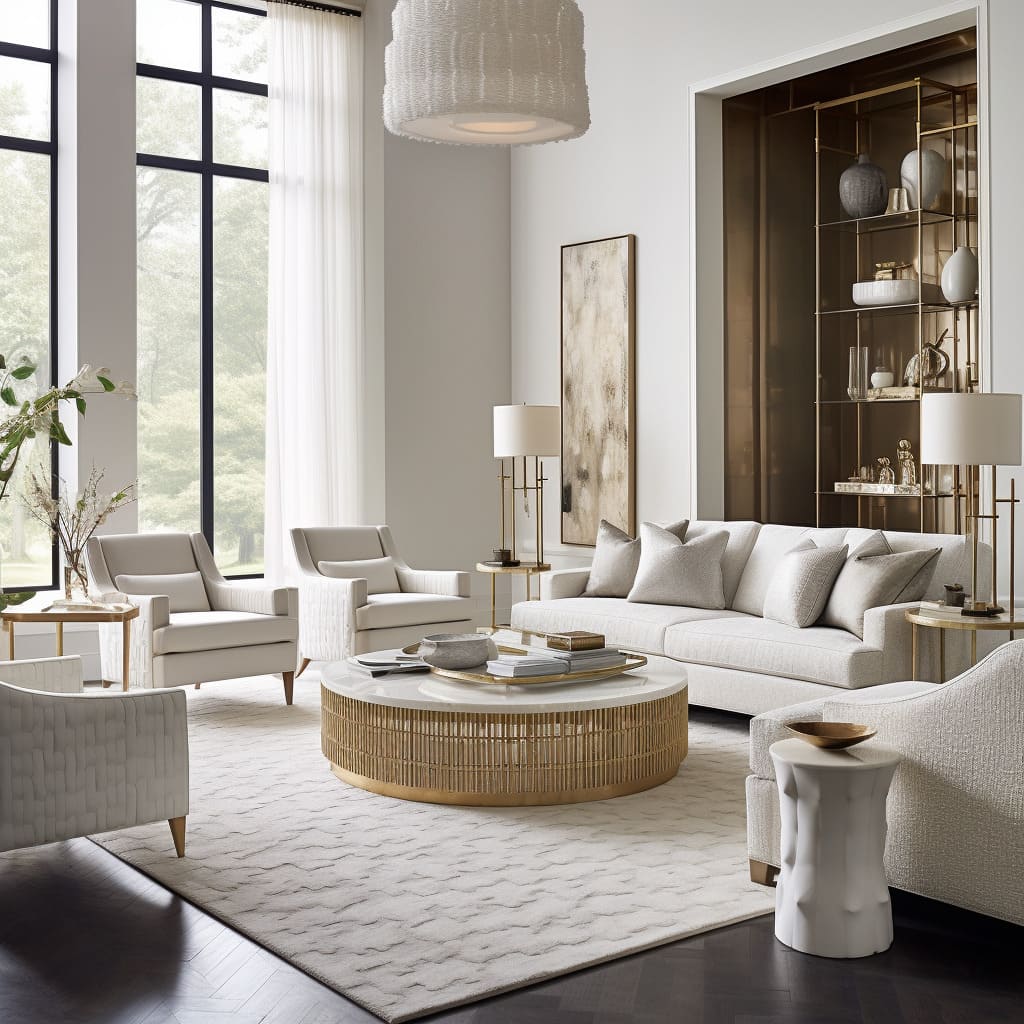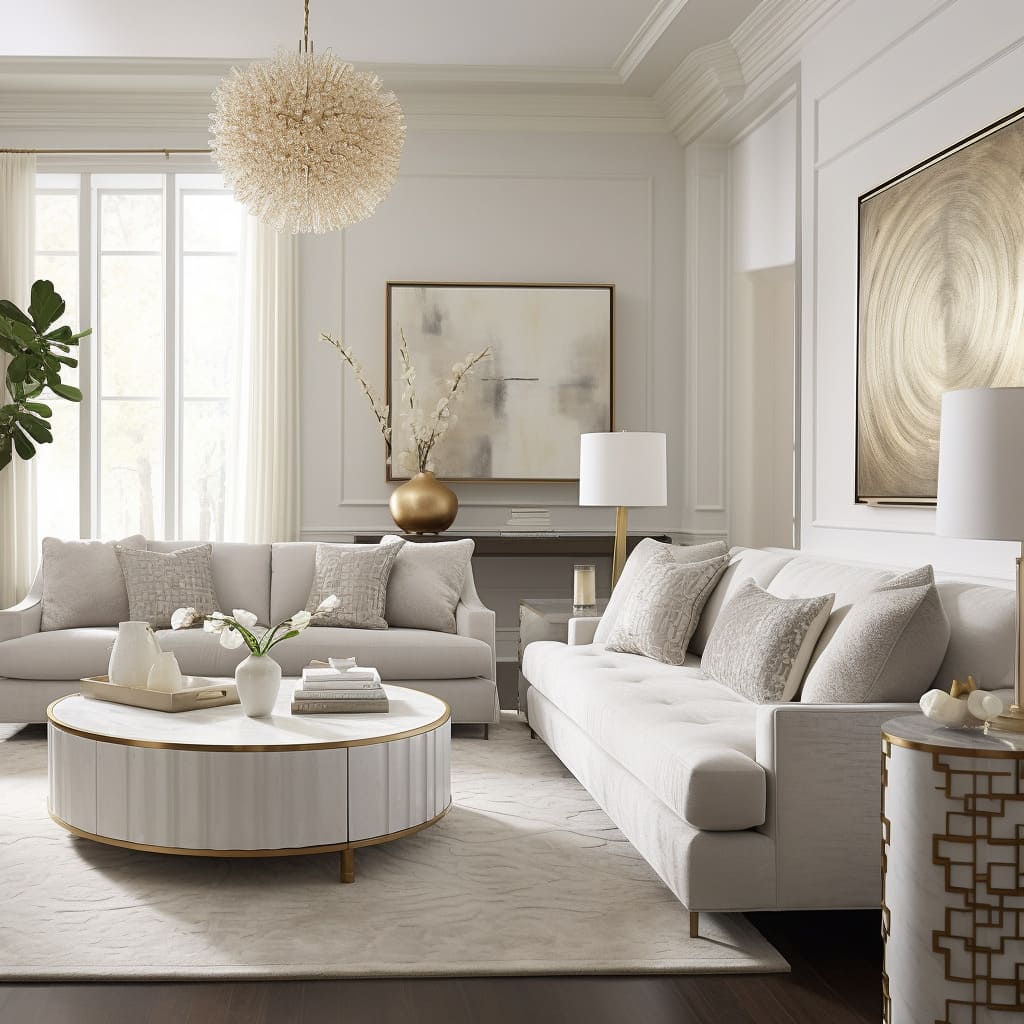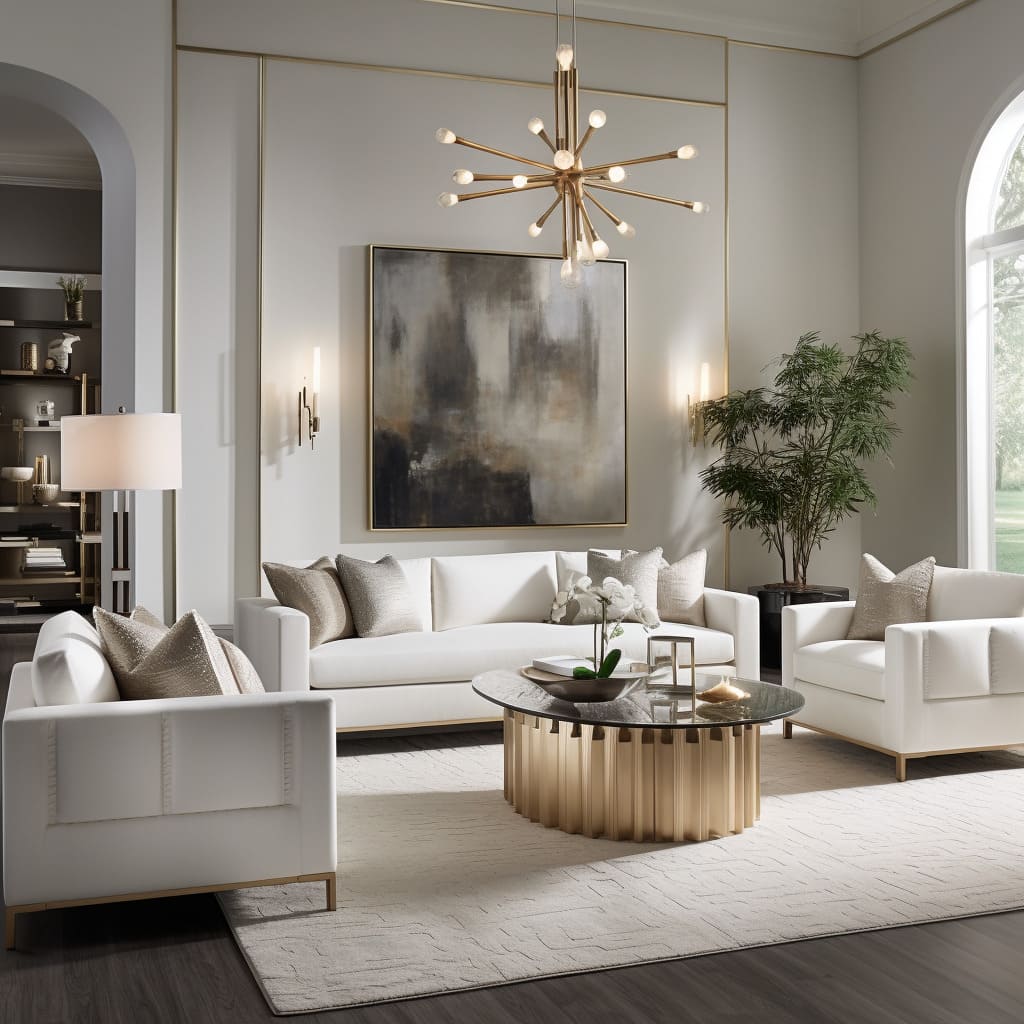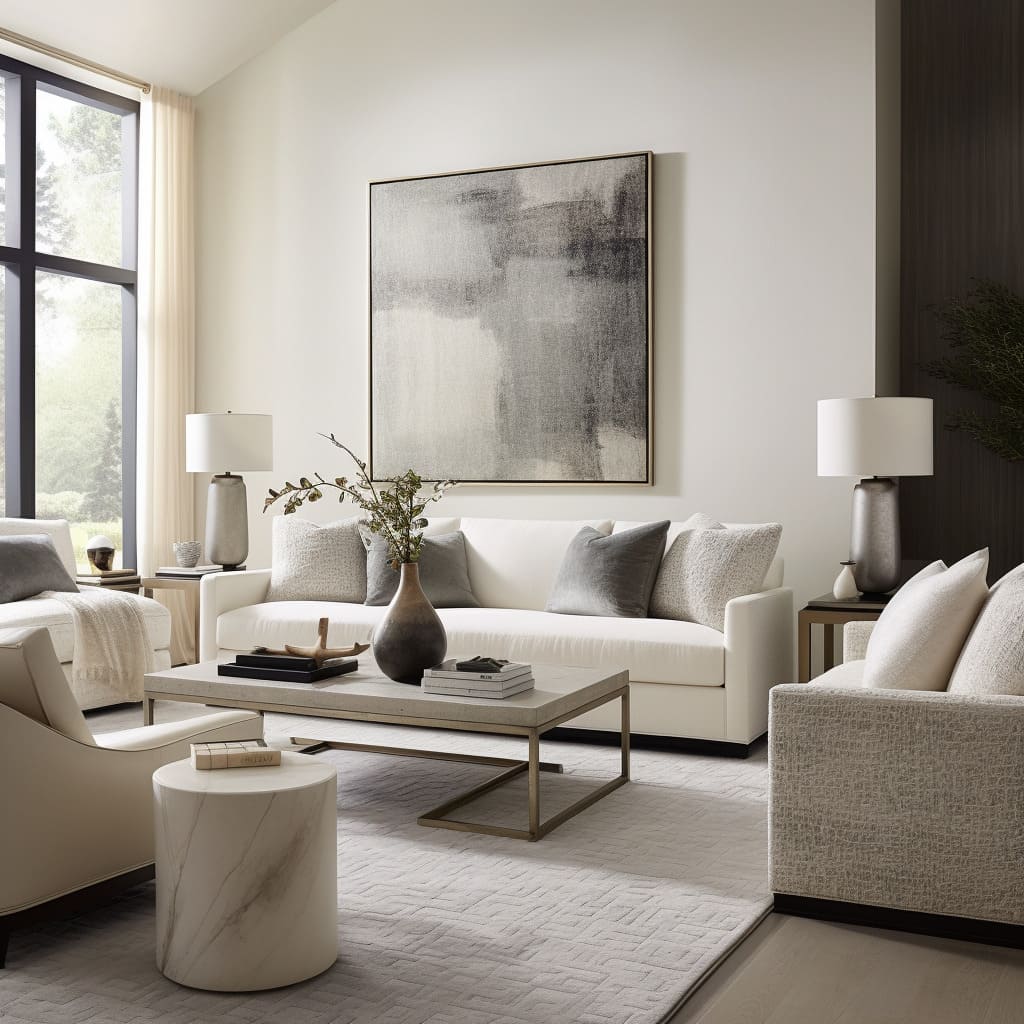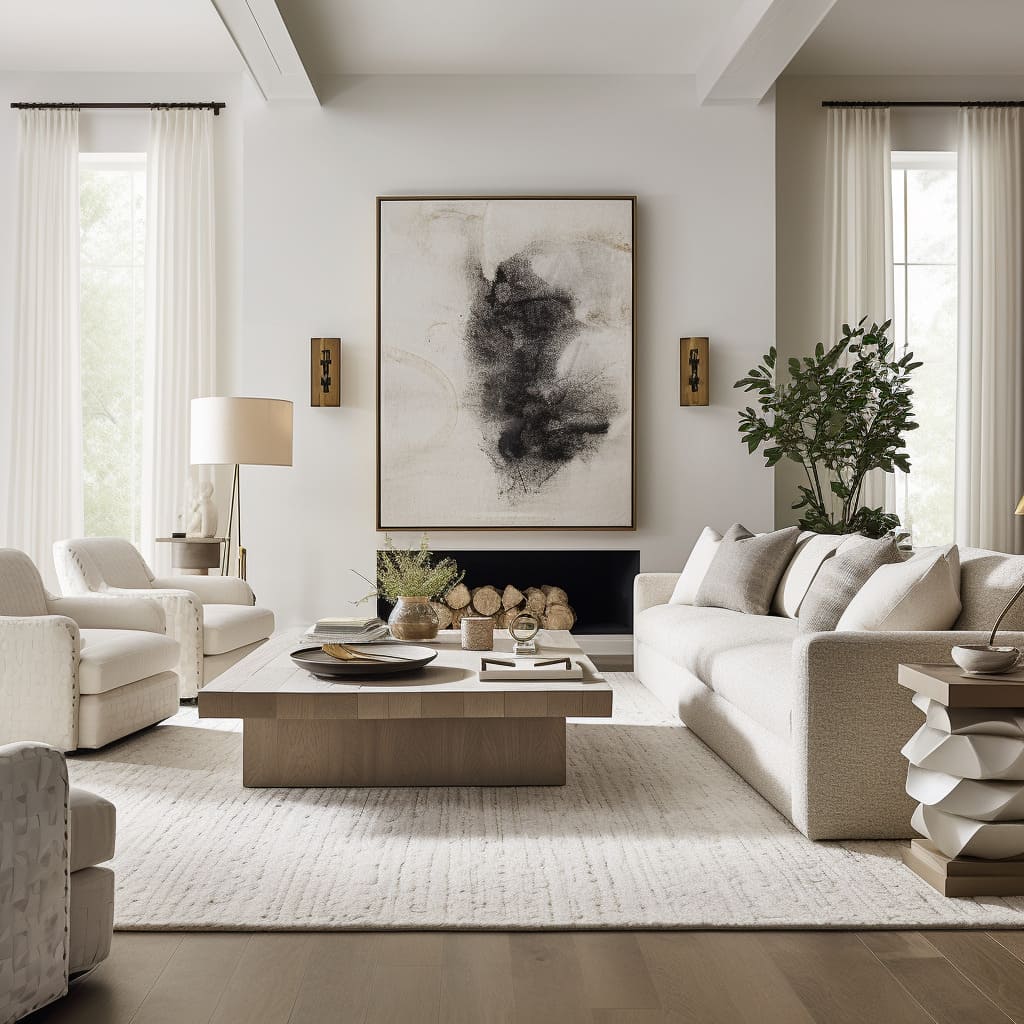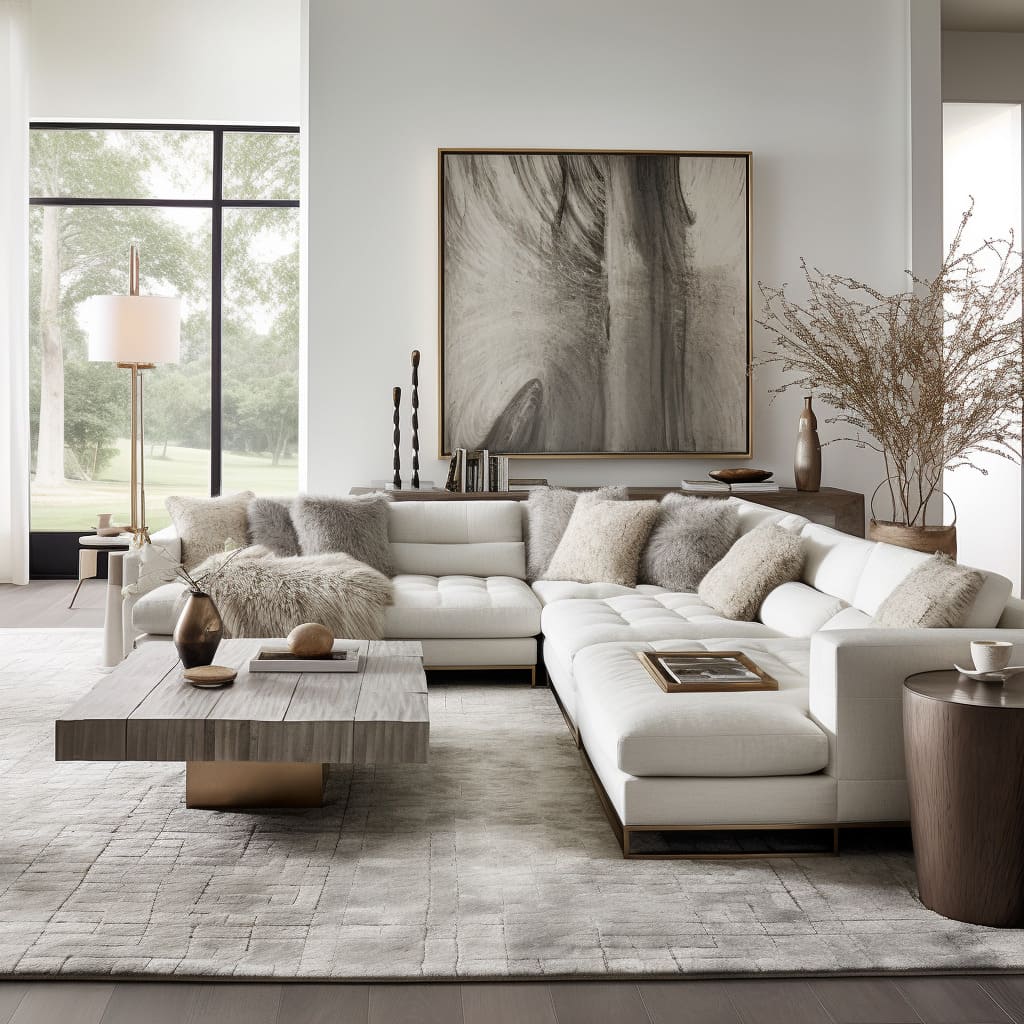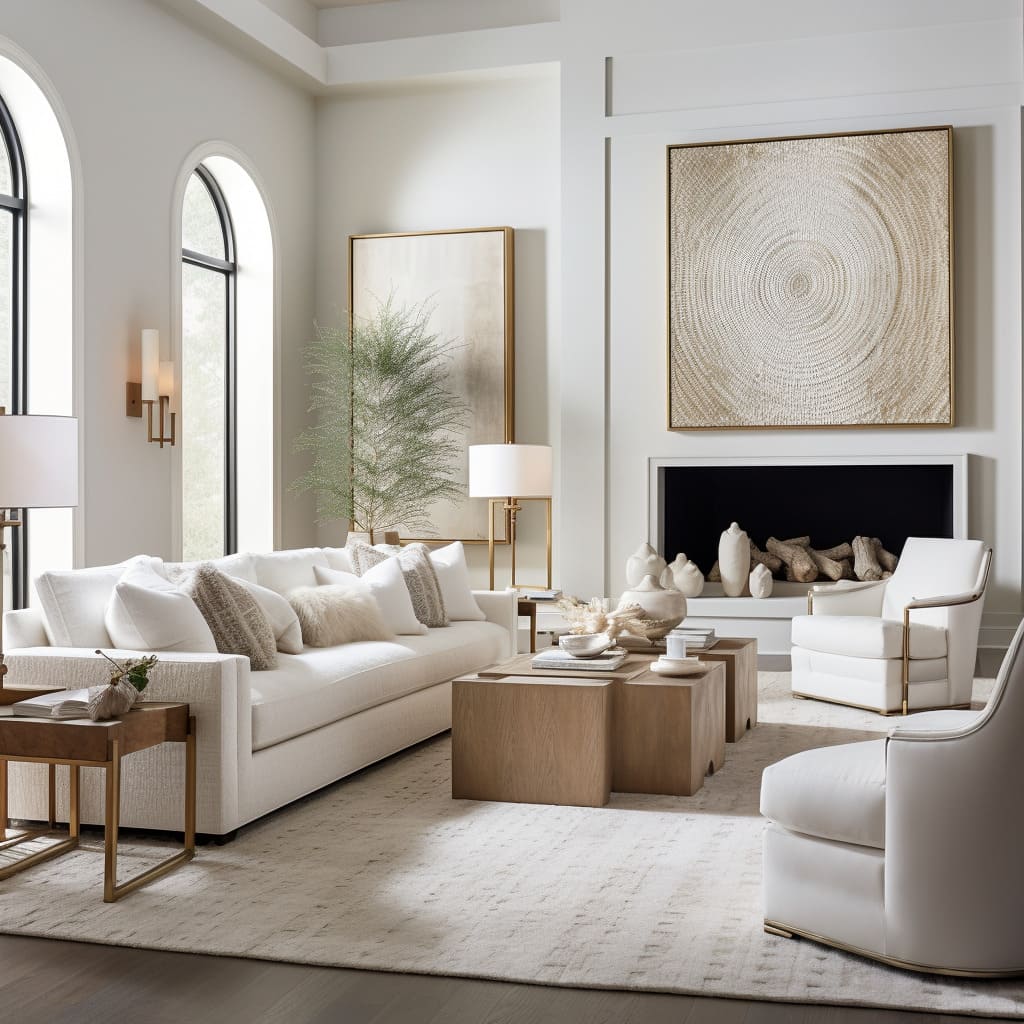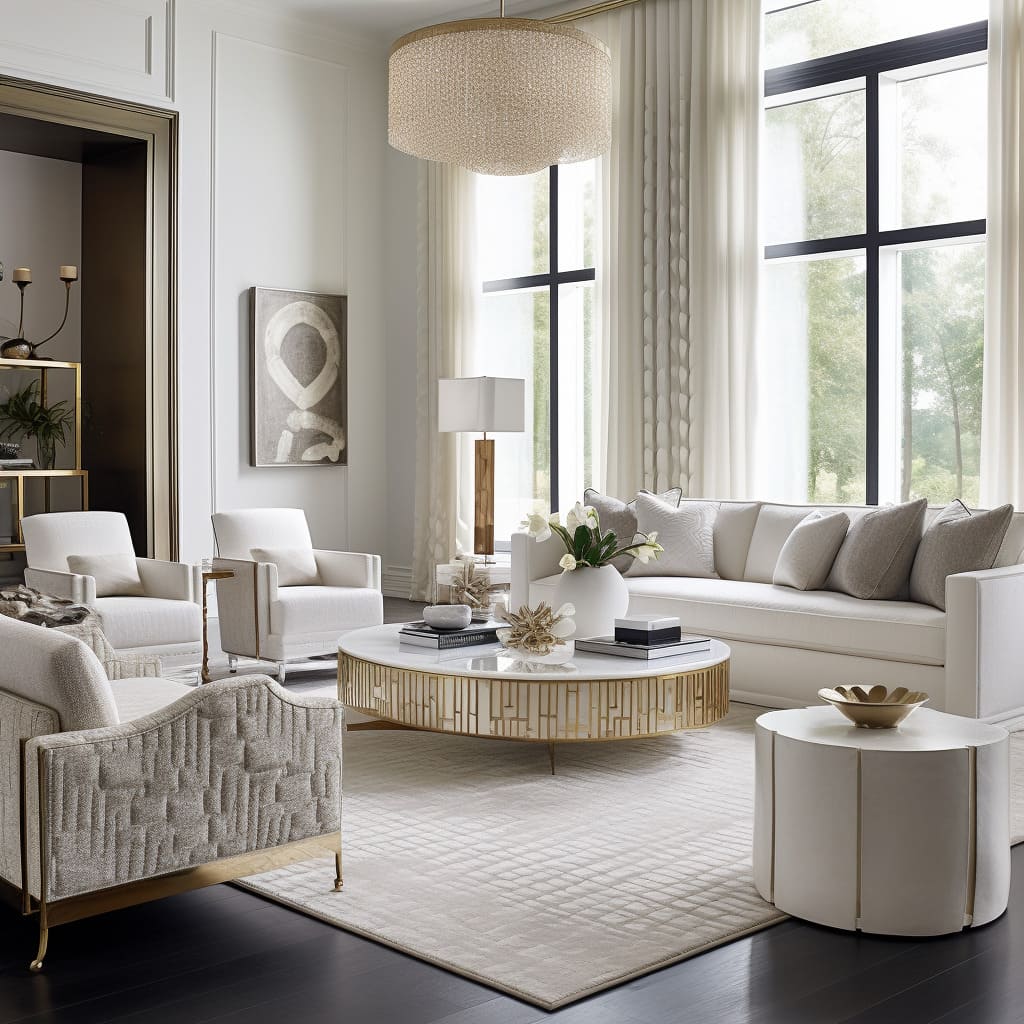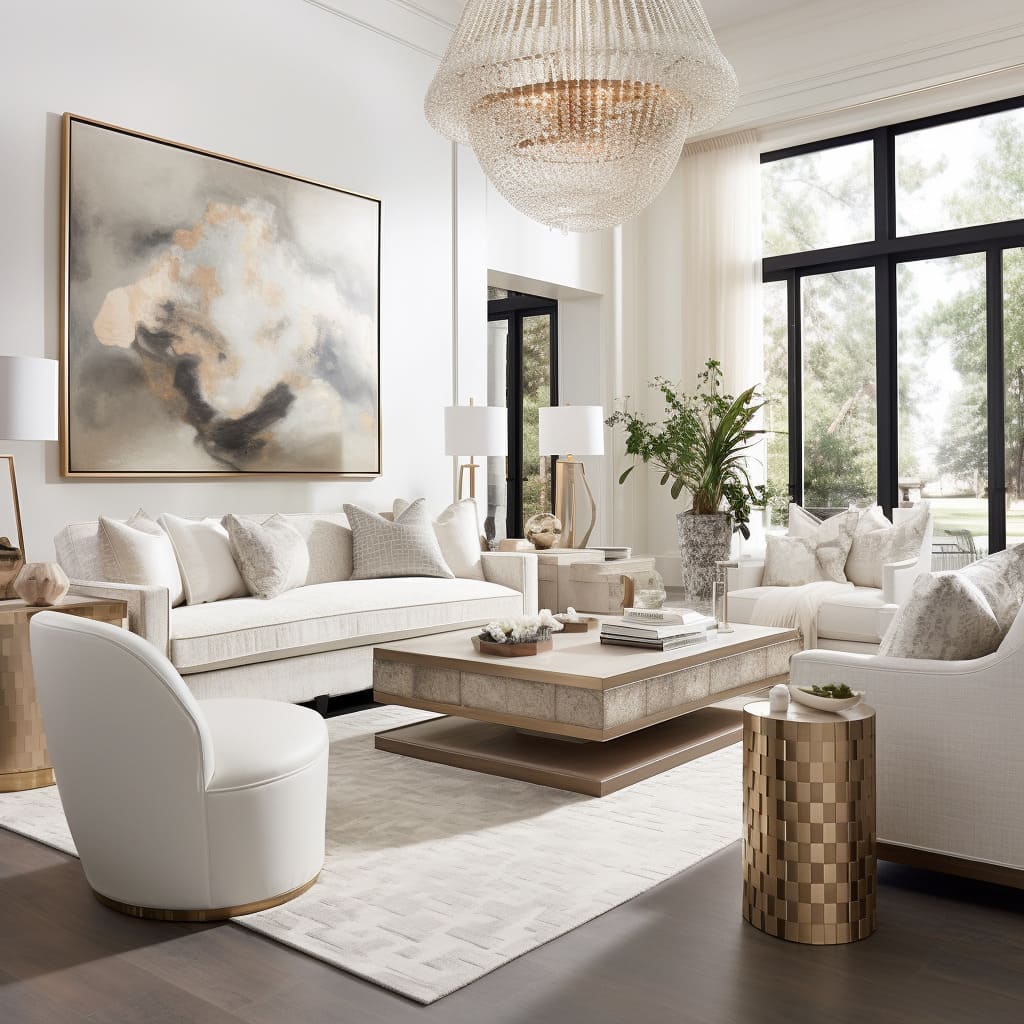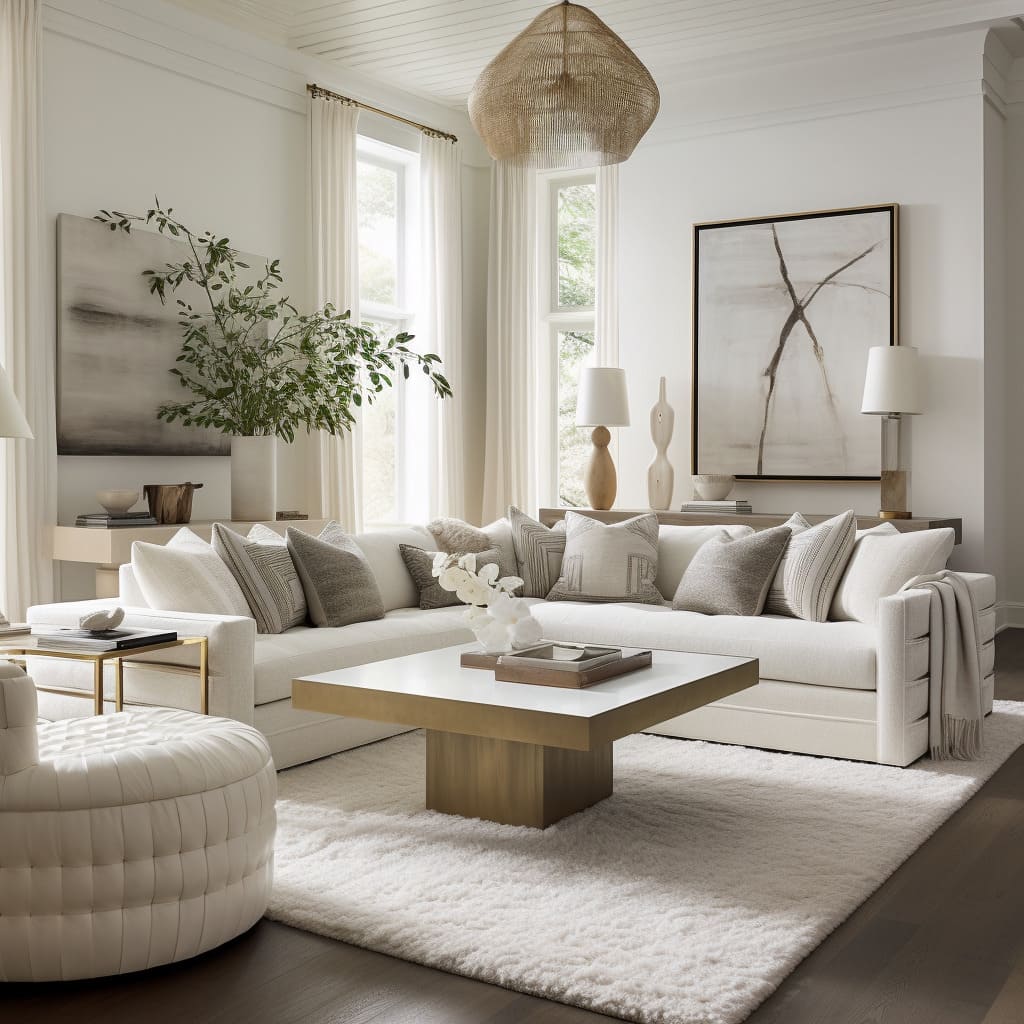Transitional interior design is where the classic charm of yesteryear gracefully commingles with the crisp, clean lines of modernity. This design philosophy is an ode to balance and subtlety, a visual sonnet that celebrates the fusion of time-honored tradition with the allure of contemporary chic.
The quintessence of this approach lies in the judicious selection and placement of furniture—a symphony of form and function where every item echoes a rich heritage while boldly stating its place in the present day.
The Essence of Transitional Style
Nestled comfortably between the ornate and the austere, Transitional style is the golden mean of interior design. It shuns the overly embellished accessories of traditional decor and steers clear of the extreme minimalism that often characterizes modern design.
Instead, it achieves an exquisite equilibrium, a visual harmony that is at once current and classic. Furniture within this paradigm serves as the cornerstone, a testament to the fact that beauty can indeed be timeless without being trapped in a bygone era.
These pieces are the physical manifestations of an ethos that honors elegance in simplicity.
Furniture Silhouettes – The Classic Meets Modern
Imagine a stately wingback chair: once a symbol of Victorian opulence, now reimagined with a sleeker silhouette, cleaner lines, and an air of understated luxury. Transitional furniture takes the best of classic forms—be it the regal lines of a Chesterfield sofa or the sturdy presence of a mahogany bureau—and gives them a contemporary spin.
The resulting designs are less about ornamentation and more about shape and form. They are lovingly crafted to stand out without shouting, to command attention without demanding it.
These pieces speak the language of the past with a modern dialect, engaging both the traditionalist and the trendsetter.
Material Matters
In Transitional furniture, the use of materials is a thoughtful process, an intentional choice that straddles the old and the new. The warmth of wood, the resilience of metal, the transparency of glass—each is selected for its intrinsic beauty and its ability to complement both a traditional and a modern aesthetic.
The tactile nature of these materials invites interaction; they are to be touched, used, and appreciated. The woods are rich but not heavy, the metals polished but not cold, the glass clear but not stark.
Together, they create furniture that is as much a feast for the senses as it is a functional part of daily life.
The Palette of Neutrality
The Transitional palette is a whisper of color, a soft murmur of earth tones, and muted hues that serve as the perfect backdrop to life’s moments. These colors are the canvas upon which the Transitional style paints its masterpiece.
They don’t vie for attention but rather support the broader design narrative. Within this subtle spectrum, the furniture stands proud, its form and material taking center stage.
And when splashes of color do appear, they do so with purpose and poise, in the form of carefully chosen accessories that punctuate the space with vibrancy.
Texture and Comfort in Upholstery
The beauty of Transitional design is not just in what meets the eye but also in what graces the touch. The upholstery in a Transitional home is a testament to the belief that comfort need not be sacrificed for style.
The fabrics are rich and inviting—think of the plush feel of chenille, the cool sophistication of linen, or the indulgent luxury of velvet. These textures draw people in, offering comfort and warmth, and encouraging moments of relaxation and reflection.
They are the silent ambassadors of hospitality, beckoning guests to stay a while, to enjoy the ambience of a room designed not just for show but for living.
Complementary Decor and Artwork
In a Transitional home, decor is not about filling space; it’s about complementing it. Each piece is chosen not just for its aesthetic appeal but for its ability to harmonize with the surroundings.
Modern art pieces find their places above fireplaces and on walls, conversing with more traditional elements like an elegantly turned table leg or a gracefully arched window. Decor in a Transitional space is a curated collection of the homeowner’s tastes—a blend of the now and the then that tells a personal story.
Architectural Elements as Transitional Anchors
The built environment of a home—the sweep of a staircase, the moldings of a ceiling, the expanse of a window—these too are integral to Transitional design. They serve as the framework within which the furniture and decor exist.
In a Transitional home, furniture is often arranged not just for functionality or visual appeal but to celebrate and accentuate these architectural elements. The design acknowledges and respects the bones of the building, allowing them to shine in tandem with the carefully selected furnishings.
Timeless Space
Creating a timeless space within the Transitional design framework is an intricate process of achieving balance. It’s about finding harmony in diversity, where the furniture and decor complement rather than match each other perfectly.
A well-curated room in this style doesn’t scream for attention with its design but instead whispers elegance through a coordinated effort of mixed elements.
In this approach, each piece, whether an antique or a modern find, is carefully chosen for its ability to endure beyond the current design trends. The goal is to select items that resonate with both the past and the future, ensuring that the space remains inviting and stylish for years to come.
This means opting for quality and craftsmanship that will age gracefully, embracing the patina of time as a testament to enduring design. White accents in the decoration complement the clean lines of the modern living room, softening the space with classic touches.
The art of curating such a space lies in the subtleties: the juxtaposition of a sleek modern sofa against a rustic coffee table, the interplay of soft textiles against hard surfaces, and the blend of neutral tones with strategic color pops. It’s a deliberate yet effortless look that presents a room as a living work of art, functional and beautiful without seeming over-curated.
In essence, curating a Transitional space is about creating a backdrop for life’s moments, an environment that feels both current and timeless. It’s a thoughtful collection of pieces that tell a story, your story, woven together into a design that stands the test of time.
Transitional style is more than just a midway point between old and new. It’s a reflection of the evolving taste that appreciates the past while looking forward.
With furniture that blends classic lines with modern materials, any home can achieve a look that is both timeless and of the moment. Let your space be the canvas, and Transitional design be your brush.

